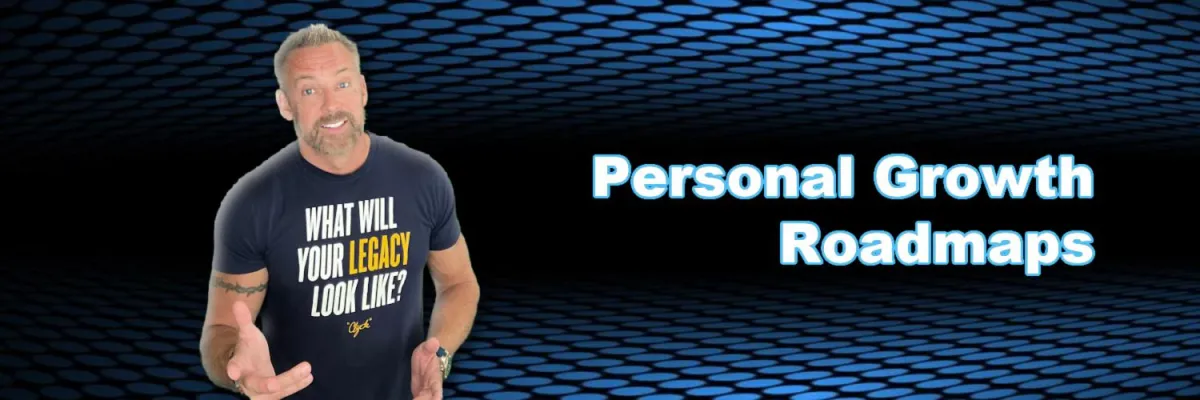

The Confidence Builder Roadmap: Unleashing the True You
"Go take what you want or receive what is left over." T Scott
Confidence is one of the most powerful traits a person can possess—it shapes how we see ourselves, how others see us, and how we interact with the world. But what happens when confidence is missing?
A Story of Lost Confidence
Imagine Sarah, a talented professional with years of experience. Despite her skills, she hesitates to speak up in meetings, fearing judgment. At home, she avoids social gatherings, afraid she won’t measure up. At the gym, she feels like everyone is watching and judging her form. Her lack of confidence impacts every area of her life, leaving her frustrated, unfulfilled, and stuck.
What Sarah doesn’t realize is that her true self—the confident, capable version of her—is still there, buried under layers of doubt, negative thoughts, and false beliefs.

The Opposite of Confidence
The opposite of confidence is doubt, insecurity, and fear. It impacts us mentally and physically:
Mentally: Doubt creates a cycle of self-criticism and hesitation, holding you back from opportunities.
Physically: Insecurity can lead to slouched posture, fidgeting, and lack of eye contact—signaling to others that you don’t believe in yourself.
Confidence (or lack of it) is contagious. People can see it from a mile away, and it often determines whether you get what you want or are left with what others decide to give you.
As I often tell my daughter: “Go take what you want or receive what is left over.”
What Is Confidence?
Confidence is the belief in your abilities and value, no matter the setting. It’s not arrogance or perfectionism—it’s the quiet assurance that you are capable and worthy.
Confidence is essential everywhere:
At home: It strengthens relationships and sets a positive tone for your family.
In social settings: It helps you connect, lead conversations, and leave a lasting impression.
At work: It drives career growth, leadership, and the ability to take risks.
At the gym: It allows you to focus on progress rather than comparisons, empowering you to show up consistently.
Lack of confidence often leads to missed opportunities, strained relationships, and a diminished quality of life. But here’s the good news: confidence can be built, step by step.
The Confidence Builder Roadmap Sequence
1. Problem Shifting
This is always the first step.
Why Problem Shifting? It’s the easiest method to understand and complete, making it the perfect starting point. Think of it as a warmup—it prepares the mind while being one of the most powerful tools we offer.
Problem Shifting clears daily mental clutter, allowing you to focus on the challenge at hand. The more you use it, the easier and more effective it becomes.
2. Blockage Shifting (If Necessary)
If Problem Shifting doesn’t resolve the issue, Blockage Shifting is the next step.
Deep Subconscious Work: This method addresses deep-rooted subconscious challenges, often involving multiple layers of problems that need to be untangled.
Blockage Shifting ensures that nothing is left unresolved.
3. Identity Shifting
For those struggling with confidence, this is usually the most transformative step.
Many people who lack confidence carry a false identity: “I’m shy,” “I’m weak,” or “I’m not capable.” These identities are almost always untrue, with a powerful, confident identity buried beneath them.
Key Tip: Start with a couple of Problem Shifting sessions and then move straight to Identity Shifting. This step reconnects you with your authentic, confident self.
4. Belief Shifting (If Necessary)
If doubts still linger, Belief Shifting can help.
What Is a Belief? It’s a thought paired with an emotion. If you have a negative thought tied to a strong emotion, Belief Shifting can replace it with an empowering belief.
5. Trauma Shifting (If Necessary)
Trauma isn’t always a major event—it can be something as simple as a breakup or hurtful words.
Trauma Shifting clears the emotional impact of past experiences, making space for confidence to grow.
6. Reality Shifting
This is the action stage, where the magic happens.
With a clear mind, a powerful identity, and aligned beliefs, you’re now ready to set and achieve your goals.
Reality Shifting allows you to map out actionable steps, bringing your newfound confidence into every area of your life.
7. Maintenance
To sustain confidence, follow these practices:
Use Reality Shifting every week to stay focused on your goals.
Use Problem Shifting method as needed to address new challenges.
The other methods won't be used as often, use as needed.
Remember: Confidence isn’t a destination; it’s a journey. Regular maintenance keeps you on track.
Final Words of Encouragement
Confidence changes everything. It impacts how you show up, how others perceive you, and how you achieve your goals. Your situation may have felt permanent before, but with Sisu Vida, your days of struggling with confidence are numbered.
You’ve got this. The confident, powerful version of you has always been there—now it’s time to bring it to life. Go take what you want, and don’t settle for leftovers.
If you're not yet a member, what are you waiting for? Let's Get Started! ⬇️⬇️


